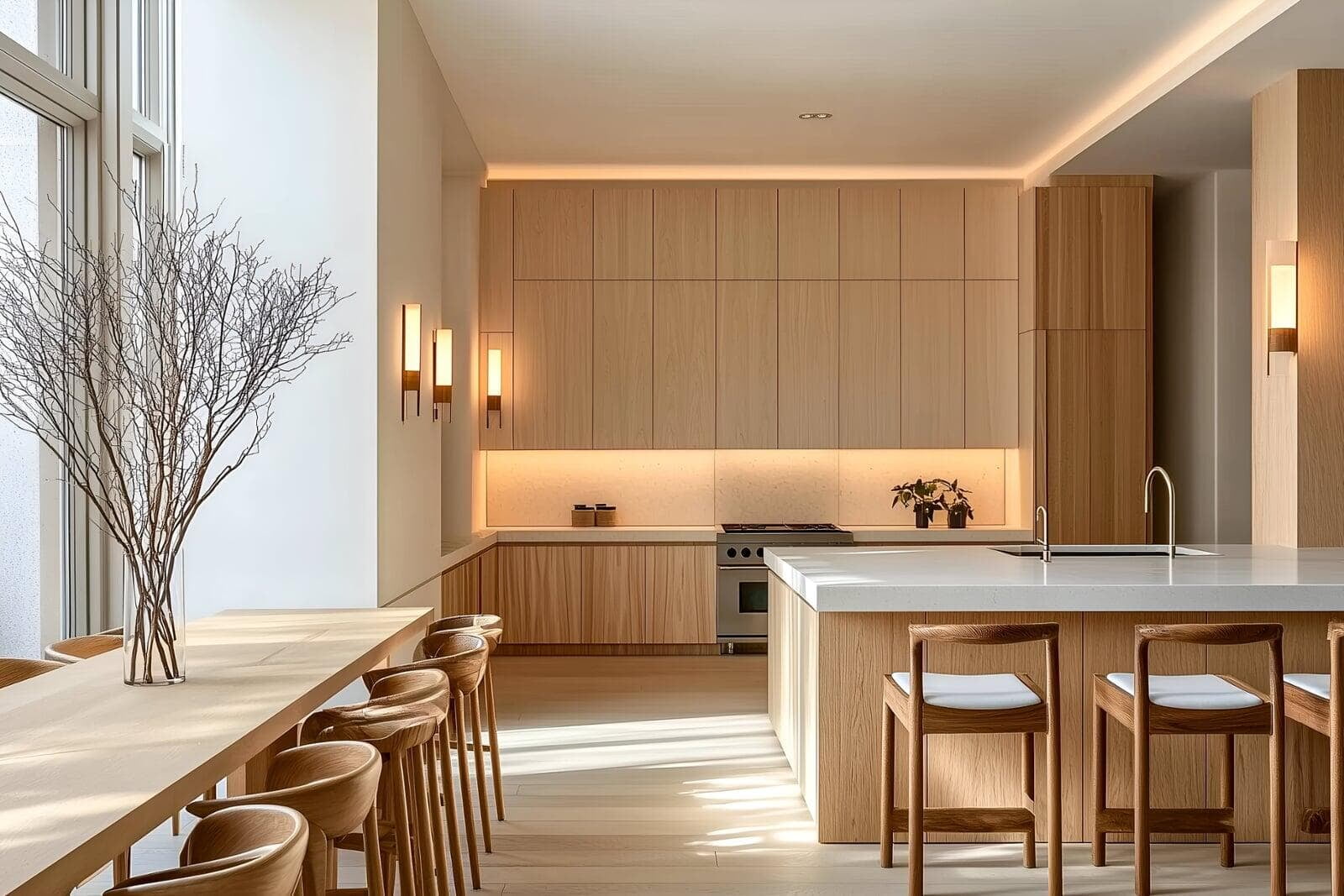Introduction
Plywood is one of the most versatile materials used in furniture making today. Known for its strength, durability, and cost-effectiveness, plywood is often the go-to material for crafting everything from cabinets and wardrobes to bed frames and chairs. However, not all plywood is created equal. There are different types of plywood available, each suited for specific applications and environments. Understanding the different types can help you choose the best one for your furniture projects.
In this blog, we'll explore the various types of plywood used in furniture making, their unique characteristics, and how to select the right plywood for your next project.

1. Commercial Plywood (MR Grade Plywood)
Commercial plywood, also known as Moisture Resistant (MR) plywood, is one of the most commonly used types in furniture making. Despite its name, MR plywood is not waterproof, but it can withstand some amount of moisture and humidity, making it suitable for indoor applications.
Characteristics:
- Glue used: Urea formaldehyde (not water-resistant)
- Layering: It is made by gluing thin layers of wood veneer together with each layer placed at right angles to the adjacent one, which increases its strength.
- Durability: Reasonably strong and durable for everyday furniture use.
Best For:
- Indoor furniture like wardrobes, shelves, and beds.
- Furniture in dry areas such as living rooms and bedrooms.
- Budget-friendly projects where high moisture resistance is not necessary.
Not Suitable For:
- Areas prone to excessive moisture or water exposure, such as kitchens and bathrooms.
2. Boiling Water Proof (BWP) Plywood
Boiling Water Proof (BWP) plywood, also referred to as Marine Plywood, is known for its superior water resistance. It can withstand prolonged exposure to water, which makes it ideal for high-moisture environments. BWP plywood is made using phenolic resins, which impart water-resistant properties.
Characteristics:
- Glue used: Phenol formaldehyde, a waterproof resin that bonds the layers.
- Waterproof: This type of plywood can be submerged in water for long periods without delaminating or deteriorating.
- High strength: It is structurally strong and resistant to warping and bending.
Best For:
- Outdoor furniture that is exposed to the elements.
- Kitchen cabinets, bathroom vanities, and other high-moisture areas.
- Areas with frequent exposure to water, such as boats or marine structures.
- Premium furniture where durability and moisture resistance are top priorities.
Not Suitable For:
- Cost-sensitive projects, as BWP plywood is more expensive than commercial plywood.
3. Boiling Water Resistant (BWR) Plywood
Boiling Water Resistant (BWR) plywood offers good water resistance, though not as high as BWP plywood. It is ideal for semi-exposed environments and furniture that may come in contact with water but not for extended periods. BWR plywood is bonded with phenolic resins, making it more resistant to water than MR-grade plywood.
Characteristics:
- Glue used: Phenol formaldehyde, making it water-resistant.
- Durability: More durable than commercial plywood and can handle moisture much better.
- Strength: Offers good structural strength, making it suitable for various indoor and semi-outdoor applications.
Best For:
- Kitchen cabinets, shelves, and countertops.
- Bathroom furniture where there is occasional contact with water.
- Outdoor furniture that’s not directly exposed to rain but may face humidity or moisture.
Not Suitable For:
- Projects requiring high-end waterproofing, like boats or outdoor structures exposed to heavy rainfall.
4. Flexible Plywood (Bendable Plywood)
Flexible plywood, also known as bendy plywood, is designed to bend easily without breaking. It is used in applications that require curved shapes and structures, such as rounded furniture designs or custom interior decor.
Characteristics:
- Flexibility: This type of plywood can be bent into various shapes without splintering or breaking.
- Thin layers: The plywood is manufactured using thin veneers, allowing it to be flexible.
- Decorative applications: Often used where a sleek, curved appearance is required.
Best For:
- Curved furniture designs like armchairs, round tables, or decorative shelving.
- Architectural elements such as curved walls or arches.
- Custom cabinetry and fixtures that require a unique design shape.
Not Suitable For:
- Structural strength applications, as flexible plywood is not designed to support heavy loads.
5. Hardwood Plywood
Hardwood plywood is made from hardwood species such as oak, maple, birch, or teak. It is highly durable and offers a smooth, rich surface that can be stained or polished to create elegant-looking furniture. Due to its strength and aesthetic appeal, hardwood plywood is often used for high-end furniture.
Characteristics:
- Strength: Extremely strong and durable, suitable for load-bearing furniture.
- Appearance: The top veneer is often from high-quality hardwood species, which gives the surface a premium, polished look.
- Finishing options: Can be easily sanded, stained, or varnished for a fine finish.
Best For:
- High-end furniture like dining tables, cabinets, and wardrobes.
- Decorative veneers for visible parts of furniture.
- Long-lasting furniture that can withstand heavy use.
Not Suitable For:
- Budget projects, as hardwood plywood is more expensive compared to softwood or commercial plywood.
6. Softwood Plywood
Softwood plywood is made from softwood species like pine, cedar, or fir. It is lighter and less expensive than hardwood plywood, but still strong enough for various furniture applications. Softwood plywood is generally used for more functional and practical furniture rather than decorative pieces.
Characteristics:
- Weight: Lighter in weight than hardwood plywood.
- Cost-effective: More affordable compared to hardwood plywood.
- Versatile: Can be used in a variety of applications, though not as visually appealing as hardwood options.
Best For:
- Utility furniture like storage shelves, utility cabinets, and workshop furniture.
- Structural elements such as backing for cabinets or bed frames.
- Budget-friendly furniture projects.
Not Suitable For:
- Decorative furniture, as softwood plywood doesn’t offer the same aesthetic finish as hardwood.
7. Fire-Retardant Plywood
Fire-retardant plywood is specially treated with chemicals to slow the spread of flames in case of a fire. It is used in furniture and construction applications where fire resistance is a priority, such as in commercial spaces or kitchens.
Characteristics:
- Fire resistance: Treated to reduce flammability and slow down the spread of fire.
- Strength: Maintains the strength of regular plywood while adding fire-resistant properties.
- Safety: Ideal for environments where fire safety is a concern.
Best For:
- Kitchens, where exposure to heat and fire is common.
- Commercial buildings like hotels or offices that need to meet fire safety regulations.
- Public spaces such as schools, hospitals, or theaters.
Not Suitable For:
- Projects where moisture or water resistance is the primary concern, as fire-retardant plywood may not have superior moisture resistance.
8. Shuttering Plywood
Shuttering plywood is primarily used in construction to create formwork or molds for pouring concrete. While not commonly used for furniture, it can sometimes be repurposed for industrial-style furniture designs.
Characteristics:
- Strength and durability: Designed to support the weight and pressure of wet concrete, making it extremely strong.
- Water resistance: Often coated with a waterproof film to prevent water absorption during concrete setting.
- Rough finish: Not meant for aesthetic purposes but for functionality.
Best For:
- Industrial-style furniture where a rough, unfinished look is desirable.
- Heavy-duty furniture like workbenches or storage units for workshops.
Not Suitable For:
- Decorative furniture, as it is not designed for a polished or finished appearance.
9. Calibrated Plywood
Calibrated plywood is precision-engineered to ensure uniform thickness across the entire sheet. It is ideal for use in CNC (Computer Numerical Control) machines, where precise cuts are necessary. This type of plywood is preferred for making modular furniture due to its consistency and smoothness.
Characteristics:
- Uniform thickness: Ensures even thickness, which is essential for modular furniture and precise machining.
- Smooth surface: Provides an ideal base for laminates and veneers.
- Strength: Durable and stable, suitable for furniture that requires accurate assembly.
Best For:
- Modular furniture such as kitchen cabinets, wardrobes, and office furniture.
- Furniture with precise cuts made by CNC machines.
Not Suitable For:
- Curved or flexible furniture designs, as calibrated plywood is rigid.
This is a Heading
Choosing the right type of plywood for your furniture-making project depends on several factors, including the environment where the furniture will be used, your budget, and the specific requirements of the piece you are crafting. Whether you need moisture-resistant plywood for kitchen cabinets, high-end hardwood plywood for luxury furniture, or flexible plywood for custom designs, understanding the different types will help you make an informed decision.
At Khidki Homes, we offer a wide range of high-quality plywood options, from commercial to BWP-grade and beyond. Our expert team can help guide you through the selection process to ensure that you find the best plywood for your next furniture project. Contact us today to learn more!






